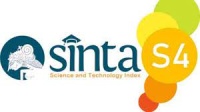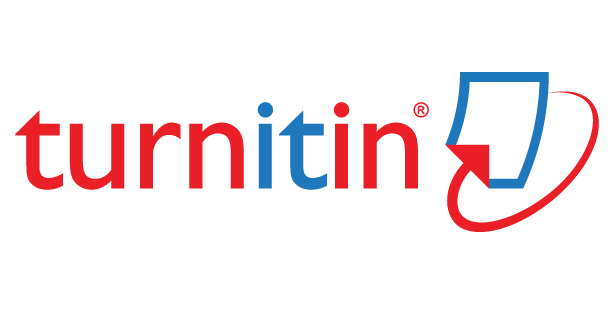The Impact of the COVID-19 Pandemic on Work Productivity in Project X in Batam Using the Data Envelopment Analysis (DEA) Method
Abstract
The development of 4.0 industry has a major influence on worldwide gas consumption. In order to meet the requirement, the gas producing company, such as Qatargas, performs expansion by building more offshore platforms on the fields. Qatargas’s infrastructure contructs by Project X that operating in Batam, Indonesia. The project X awarded by Qatargas to commence by the end of 2021. The scope of work includes engineering, procurement, construction, and installation (EPCI). During the construction, an unexpected even, COVID-19, occurred and caused a negative impact to the construction productivity. A non-parametric Data Envelopment Analysis (DEA) is utilized to measure performance trends with focus on project X daily progressing report from 2022 (during pandemic) until 2023 (post-pandemic). SWOT and PEST are utilised to analyse the improvement strategy by Project X. Efficiency measurement by DEA has 3 different variable, such as total employee, total welding made, and work pack issued, whereby the output is total manhours earned. This report also analyses six division of Decision-Making Unit (DMU). The research employs SWOT analysis to identify factors affecting project performance and strategies for efficiency improvement. Based on the analysis, there is no significant impact due to pandemic since PT X still could continue to perform fabrication while maintaining the required health protocol. The mean efficiency is 0,734 in 2022 and 0,656 in 2023. The project productivity declines by 0,078 because of declining efficiency parameter on Production Electrical dan Structural Quality Division. The efficiency improvement strategy for Project X includes optimizing the number of employees, minimizing rework, and daily monitoring of manhours earned to prevent inaccurate work hour claims.
Full Text:
PDFReferences
R. Filip, R. Gheorghita Puscaselu, L. Anchidin-Norocel, M. Dimian, and W. K. Savage, “Global Challenges to Public Health Care Systems during the COVID-19 Pandemic: A Review of Pandemic Measures and Problems,” Journal of Personalized Medicine, vol. 12, no. 8, Art. no. 8, Aug. 2022, doi: 10.3390/jpm12081295.
B. P. Arfandi and M. Abduh, “Pengaruh Pandemi Covid-19 Terhadap Produktivitas Pekerjaan Konstruksi (Tinjauan Analisis Statistik Terhadap Penerapan Protokol Kesehatan),” in Seminar Keinsinyuran Program Studi Program Profesi Insinyur, 2021. Accessed: Sep. 11, 2024. [Online]. Available: https://pdfs.semanticscholar.org/8e25/dcf677a74fee80141c0128cc97e255b0ba95.pdf
S. Lertworasirikul, S.-C. Fang, J. A. Joines, and H. L.W. Nuttle, “Fuzzy data envelopment analysis (DEA): a possibility approach,” Fuzzy Sets and Systems, vol. 139, no. 2, pp. 379–394, Oct. 2003, doi: 10.1016/S0165-0114(02)00484-0.
A. Azis, R. Eldianson, and M. T. Tampubolon, “Kesejahteraan Karyawan Mempengaruhi Produktivitas Kerja Perusahaan di Era Pandimi Covid-19,” El-Mal: Jurnal Kajian Ekonomi & Bisnis Islam, vol. 3, no. 3, Art. no. 3, Feb. 2022, doi: 10.47467/elmal.v3i3.968.
“Construction Company Performance Trends During the Covid-19 Pandemic,” in North American International Conference on Industrial Engineering and Operations Management, 2022. Accessed: Sep. 11, 2024. [Online]. Available: https://ieomsociety.org/proceedings/2022orlando/247.pdf
M. J. Black, P. A. Bryan, and J. D. Scobie, “Liquefied Natural Gas Development: Overview and the Growth of Future Gas Supply for the North American Market,” Alta. L. Rev., vol. 43, p. 51, 2006 2005.
A. C. Rahmat and P. F. Firdaus, “Kebijakan Qatar Mengakhiri Keanggotaan Dari Organization Of The Petroleum Exporting Countries,” Global and Policy Journal of International Relations, vol. 12, no. 01, Art. no. 01, Jun. 2024, doi: 10.33005/jgp.v12i01.4309.
A. Meza, M. Koç, and M. S. Al-Sada, “Perspectives and strategies for LNG expansion in Qatar: A SWOT analysis,” Resources Policy, vol. 76, p. 102633, Jun. 2022, doi: 10.1016/j.resourpol.2022.102633.
M. F. Permatasari and A. A. Setyawan, “Pengukuran Efisiensi Kinerja Umkm Menggunakan Metode Data Envelopment Analysis (DEA),” Prosiding Seminar Bisnis Magister Manajemen (SAMBIS) 2019, 2019. Accessed: Sep. 11, 2024. [Online]. Available: https://publikasiilmiah.ums.ac.id/xmlui/handle/11617/11080
S. H. Mousavi-Avval, S. Rafiee, A. Jafari, and A. Mohammadi, “Optimization of energy consumption for soybean production using Data Envelopment Analysis (DEA) approach,” Applied Energy, vol. 88, no. 11, pp. 3765–3772, Nov. 2011, doi: 10.1016/j.apenergy.2011.04.021.
A. S. A. Rahman, S. A. S. Ali, M. R. Isa, F. Ali, D. Kamaruddin, and M. H. Baharuddin, “Performance Assessment of Malaysian Fossil Fuel Power Plants: A Data Envelopment Analysis (DEA) Approach,” International Journal of Renewable Energy Development, vol. 12, no. 2, p. 247, 2023.
B. Y. Keskin and S. Degirmen, “The application of data envelopment analysis based Malmquist total factor productivity index: Empirical evidence in Turkish banking sector,” Panoeconomicus, vol. 60, no. 2, pp. 139–159, 2013.
A.-B. T. Abukari, B. ÖZtornaci, and P. VEZÄ°ROÄžLU, “Total factor productivity growth of Turkish agricultural sector from 2000 to 2014: Data envelopment malmquist analysis productivity index and growth accounting approach,” JDAE, vol. 8, no. 2, pp. 27–38, Feb. 2016, doi: 10.5897/JDAE2015.0700.
C. Procel, “Efficiency analysis of catalonia’s construction industry pre-and postfinancial crisis: a data envelopment analysis (dea) approach,” Tec Empresarial, vol. 15, no. 2, pp. 18–32, 2021.
Y. Roll and Y. Hayuth, “Port performance comparison applying data envelopment analysis (DEA),” Maritime Policy & Management, vol. 20, no. 2, pp. 153–161, Jan. 1993, doi: 10.1080/03088839300000025.
A. Mardani, E. K. Zavadskas, D. Streimikiene, A. Jusoh, and M. Khoshnoudi, “A comprehensive review of data envelopment analysis (DEA) approach in energy efficiency,” Renewable and Sustainable Energy Reviews, vol. 70, pp. 1298–1322, Apr. 2017, doi: 10.1016/j.rser.2016.12.030.
S. Kohl, J. Schoenfelder, A. Fügener, and J. O. Brunner, “The use of Data Envelopment Analysis (DEA) in healthcare with a focus on hospitals,” Health Care Manag Sci, vol. 22, no. 2, pp. 245–286, Jun. 2019, doi: 10.1007/s10729-018-9436-8.
J. K. Mantri, Research Methodology on Data Envelopment Analysis (DEA). Universal-Publishers, 2008.
DOI: https://doi.org/10.31284/j.jasmet.2024.v5i2.6635
Refbacks
- There are currently no refbacks.
Copyright (c) 2024 Yohana Selliabreint Br Sembiring, Putu Artama Wiguna

This work is licensed under a Creative Commons Attribution-ShareAlike 4.0 International License.
Mailing Address: Journal of Applied Sciences, Management and Engineering Technology - ITATS Institut Teknologi Adhi Tama Surabaya Jl. Arief Rahman Hakim No.100, Surabaya 60117 email: [email protected] Website : https://ejurnal.itats.ac.id/jasmet/index

This work is licensed under a Creative Commons Attribution-ShareAlike 4.0 International License.









